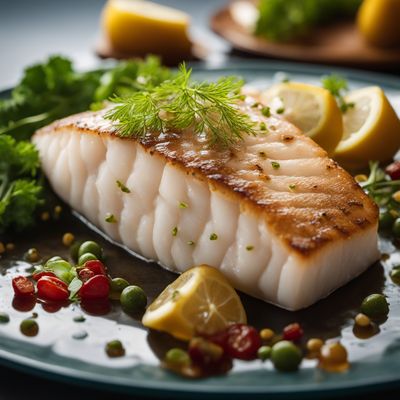
Ingredient
Halibut
The King of the Sea: Halibut
Halibut is a large, flatfish with a distinctive diamond-shaped body and a firm, yet tender texture. Its flesh is pearly white and has a mild, slightly sweet flavor. This versatile fish can be prepared in various ways, including grilling, baking, and pan-searing, and is often featured in gourmet seafood dishes.
Origins and history
Halibut has a rich history in both European and North American cuisines. It is native to the cold waters of the North Atlantic and North Pacific oceans. Halibut fishing has been a traditional practice for centuries, with indigenous communities relying on this fish for sustenance. Today, halibut is highly sought after for its culinary value and is considered a premium seafood option.
Nutritional information
Halibut is a nutrient-dense fish that is low in calories and fat, while being an excellent source of high-quality protein. It is also rich in omega-3 fatty acids, which are beneficial for heart health and brain function. Halibut is a good source of vitamins B12 and D, as well as minerals like selenium and phosphorus.
Allergens
Fish
How to select
When selecting halibut, look for fillets or steaks that are firm, moist, and have a fresh, mild aroma. The flesh should be translucent and free from any discoloration or browning. If purchasing a whole fish, the eyes should be clear and bulging, and the skin should be shiny and intact. Opt for sustainably sourced halibut to support responsible fishing practices.
Storage recommendations
To maintain the freshness of halibut, store it in the coldest part of your refrigerator, ideally at a temperature between 30°F (-1°C) and 34°F (1°C). Keep the fish wrapped in a damp paper towel or place it in a sealed container to prevent it from drying out. Consume within 1-2 days of purchase for optimal flavor and quality.
How to produce
Halibut is a cold-water fish that is primarily caught in the North Atlantic and North Pacific oceans. It requires specific conditions, including cold temperatures and deep waters, to thrive. While it is challenging to produce halibut on a small scale, commercial aquaculture operations have been successful in raising halibut in controlled environments.
Preparation tips
Halibut can be prepared using various cooking techniques, such as grilling, baking, broiling, or pan-searing. It is important not to overcook halibut, as it can become dry and lose its delicate texture. Season the fish with herbs, spices, or citrus zest to enhance its flavor. Serve halibut with fresh vegetables, grains, or sauces to create a well-balanced seafood dish.
Substitutions
Cod, sea bass, or grouper can be used as substitutes for halibut, as they have a similar texture and mild flavor. However, keep in mind that the taste may vary slightly.
Culinary uses
Halibut is a versatile fish that can be used in a wide range of culinary applications. It can be grilled and served with a lemon-butter sauce, baked with herbs and breadcrumbs, or pan-seared and served over a bed of vegetables. Halibut is often featured in gourmet seafood dishes, such as ceviche, fish tacos, and fish and chips.
Availability
Halibut is commonly available in North America, particularly in coastal regions of the United States and Canada. It is also found in European countries, such as Norway, Iceland, and the United Kingdom. Fresh halibut is typically more readily available during the spring and summer months.
More ingredients from this category
Recipes using Halibut » Browse all

Inuit-style Seafood Feast
Arctic Delights: A Traditional Inuit Seafood Celebration
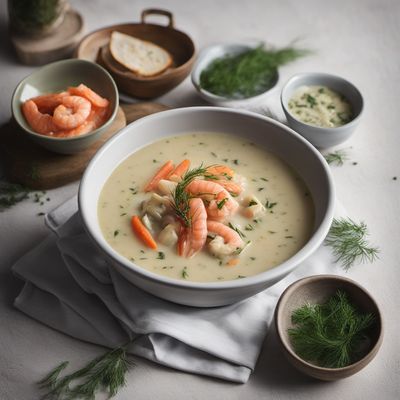
Norwegian Seafood Chowder
Nordic Delight: Creamy Seafood Chowder with a Norwegian Twist

Basque Seafood Stew
Oceanic Delight: Basque Seafood Stew
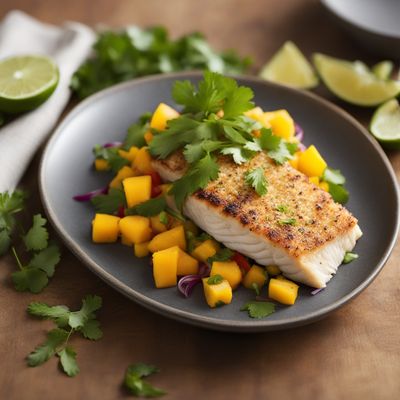
Coconut Crusted Halibut with Mango Salsa
Tropical Delight: Coconut Crusted Halibut with Zesty Mango Salsa
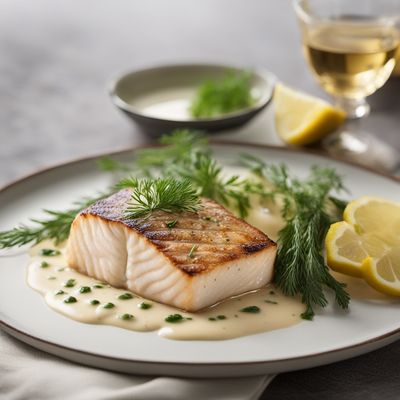
Scottish Halibut with Whisky Cream Sauce
Whisky-infused Scottish Halibut Delight

Classic Bouillabaisse
Marseille's Seafood Delight: A Traditional Bouillabaisse Recipe

Haute Cuisine Fish and Chips
Elevated Fish and Chips: A Gourmet Twist on a Classic Dish

Kashmiri Spiced Halibut with Fragrant Rice
Kashmiri Delight: Fragrant Spiced Halibut with Aromatic Rice

Shorshe Ilish with Mustard Sauce
Savor the Richness: Shorshe Ilish - A Delightful Bangladeshi Culinary Experience

Bacon-Wrapped Fish Rolls
Savory Seafood Delight: Bacon-Wrapped Fish Rolls

Bourride with a Twist
Mediterranean Delight: A Modern Twist on Classic Bourride
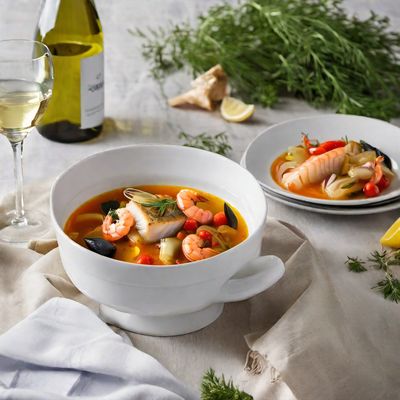
Haute Cuisine Bouillabaisse
Elevated Bouillabaisse: A Haute Cuisine Delight
